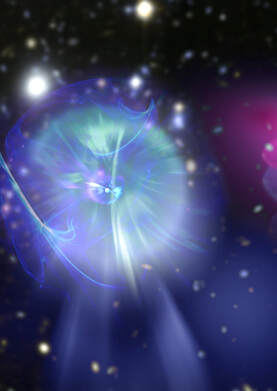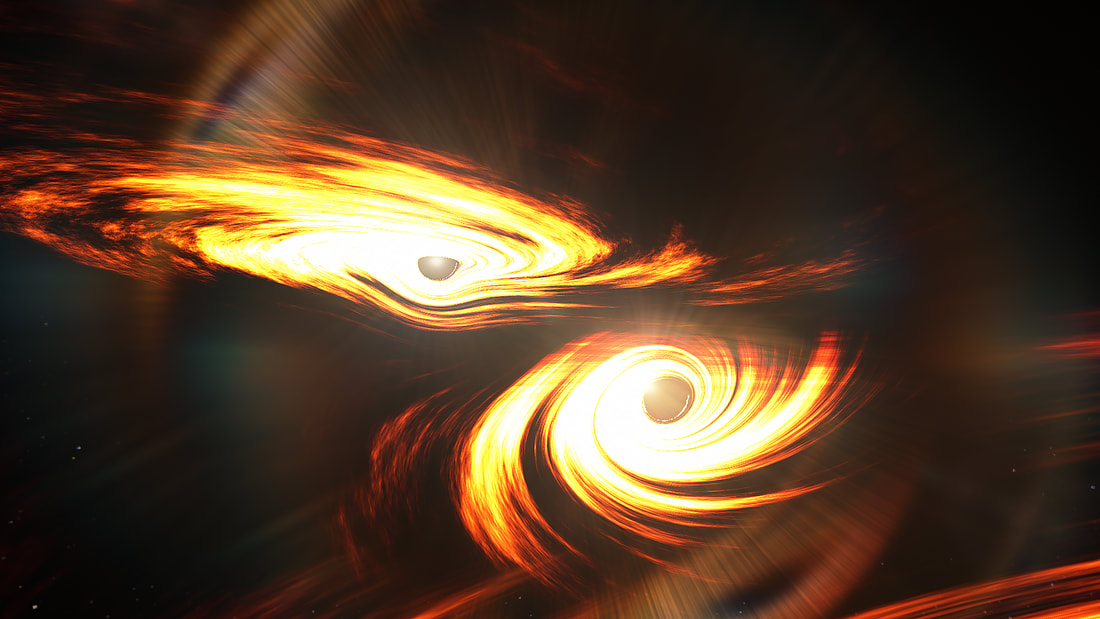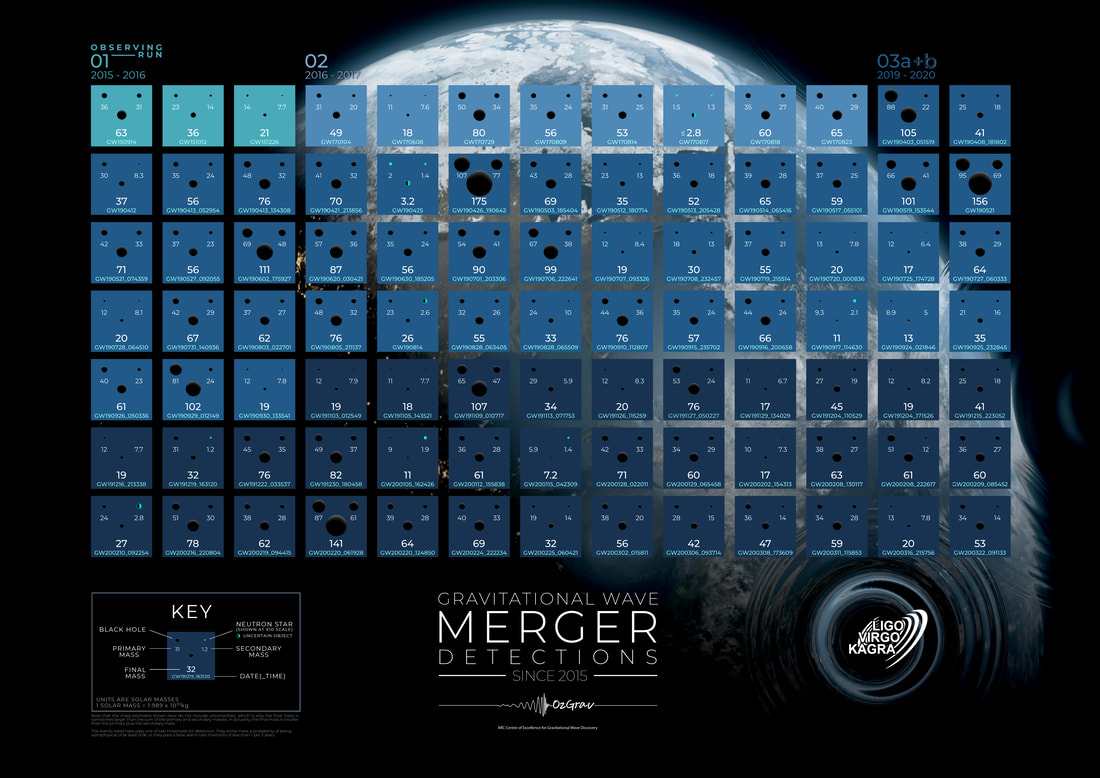|
Many of the heaviest stars in the Universe will end their lives in a bright explosion, known as a supernova, which briefly outshines the rest of its host galaxy, allowing us to view these rare events out to great distances. At the lower end of this mass range, the supernova explosion will squeeze the core of the star into a dense ball of neutrons that is much denser than what can be reproduced in laboratories. So, scientists must rely on theoretical models and astronomical observations to study these objects, known as neutron stars. At the very low end of this range, the supernova explosions are thought to be weaker and dimmer, but even for state-of-the-art supernova simulations, it’s challenging to test this hypothesis. In our recently published study, we found a new way to test these weaker supernovae: by associating weaker supernova explosions with slowly moving neutron star remnants, neutron star speeds could accurately estimate the weaker supernovae, without the need for expensive simulations. Neutron stars don’t shine bright like other stars, but instead produce a very narrow beam of radio waves which may (if we’re lucky) point toward the Earth. As the neutron star rotates, the beam of light appears to flash on and off, creating a lighthouse effect. When this effect is observed, , we refer to it as a pulsating star, or pulsar. Recent advances in radio telescopes allow for precise measurements of pulsar velocities. We combined our measurements with simulations of millions of stars and found that the typically high pulsar speeds did not allow for many weak supernovae. However, there is a caveat: many of the massive stars that produce neutron stars are born in stellar binaries. If a normal supernova occurs in a stellar binary, the neutron star remnant will experience a large recoil kick—like a cannonball rushing away from the exploding gunpowder—and it will likely eject away from its companion star where it may later be observed as a single pulsar. But if the supernova is weak, the neutron star may not have enough energy to escape the gravitational tug of its companion star, and the stellar binary system will remain intact. This is a necessary step in the formation of neutron star binaries, so the existence of these binaries proves that some supernova explosions must be weak. We found that to explain both the existence of neutron star binaries and the absence of slow-moving pulsars, weak supernovae can only occur in very close stellar binaries, not in single, isolated stars. This is useful for modelling supernova simulations and adds to a growing body of research suggesting that weak supernovae may only happen in stellar binaries which have previously interacted with each other. Studies like this, which simulate many stars in relatively low detail, are key to understanding the effects of uncertain physics on stellar populations, which is unfeasible with highly-detailed simulations. Written by PhD student Reinhold Wilcox, Monash University
0 Comments
With the growing catalogue of binary black hole mergers, researchers can study the overall spin properties of these systems to uncover how they formed and evolved. Recent work paints a conflicting picture of our understanding of the spin magnitudes and orientations of merging binary black holes, pointing to different formation scenarios. Our recent study, published in the Astrophysical Journal Letters, resolved these conflicts and allowed us to understand the spin distribution of binary black holes. Forming black hole binaries There are two main pathways to form a binary black hole: the first is via ‘isolated’ evolution, a process which involves the black hole binary being formed from the core collapse of two stars in a binary; the second is ‘dynamical’ evolution where interactions between black holes in dense stellar clusters can lead to a pair of black holes capturing each other to form a binary. These pathways show distinct features in the spin distribution of binary black hole mergers. Binaries formed via isolated evolution tend to have spins that are closely aligned with the orbital angular momentum, whereas dynamically formed systems have spins that are randomly orientated and have a distribution of spin tilts that is isotropic. In the latest population study from LIGO-Virgo, we saw evidence for both of these channels, however a more recent study by Roulet et. al 2021, showed that the population was consistent with the isolated channel alone. This inconsistency raises the question: how can we obtain different conclusions from the same population? The answer is model misspecification: The previous spin models were not designed to capture possible sharp features or sub-populations of spin in the model. The emerging picture of the spins of black hole binaries Using a catalogue of 44 binary black hole mergers, this new study finds evidence for two populations within the spin distribution of black hole binaries: one with negligible spins and the other moderately spinning with preferential alignment with the orbital angular momentum. This result can be fully explained via the isolated formation scenario. The progenitors of most black holes lose their angular momentum when the stellar envelope is removed by the binary companion, forming black hole binaries with negligible spin, while a small fraction of binaries have the second-born black hole spun up via tidal interactions.This study opens a number of interesting avenues to explore, for example, an investigation of the relationship between the mass and spin of these different subpopulations. Investigating such correlations can help improve the accuracy of our models and enable us to better distinguish between different evolution pathways of binary black holes. Written by OzGrav PhD student Shanika Galaudage, Monash University Recently published in ApJL https://iopscience.iop.org/article/10.3847/2041-8213/ac2f3c Key points:
The gravitational-wave Universe is teeming with signals produced by merging black holes and neutron stars. In a new paper released today, an international team of scientists, including Australian OzGrav researchers, present 35 new gravitational wave observations, bringing the total number of detections to 90! All of these new observations come from the second part of observing run three, called “O3b”, which was an observing period that lasted from November 2019 to March 2020. There were 35 new gravitational wave detections in this period. Of these, 32 are most likely to come from pairs of merging black holes, 2 are likely to come from a neutron star merging with a black hole, and the final event could be either a pair of merging black holes or a neutron star and a black hole. The mass of the lighter object in this final event crosses the divide between the expected masses of black holes and neutron stars and remains a mystery. Dr Hannah Middleton, postdoctoral researcher at OzGrav, University of Melbourne, and co-author on the study says “Each new observing run brings new discoveries and surprises. The third observing run saw gravitational wave detection becoming an everyday thing, but I still think each detection is exciting!". Highlights Of these 35 new events, here are some notable discoveries (the numbers in the names are the date and time of the observation):
“It’s fascinating that there is such a wide range of properties within this growing collection of black hole and neutron star pairs”, says study co-author and OzGrav PhD student Isobel Romero-Shaw (Monash University). “Properties like the masses and spins of these pairs can tell us how they’re forming, so seeing such a diverse mix raises interesting questions about where they came from.” Not only can scientists look at individual properties of these binary pairs, they can also study these cosmic events as a large collection - or population. “By studying these populations of black holes and neutron stars we can start to understand the overall trends and properties of these extreme objects and uncover how these pairs came to be” says OzGrav PhD student Shanika Galaudage (Monash University) who was a co-author on a companion publication released today: ‘The population of merging compact binaries inferred using gravitational waves through GWTC-3 P2100239’. In this work, scientists analysed the distributions of mass and spin and looked for features which relate to how and where these extreme object pairs form. Shanika adds, “There are features we are seeing in these distributions which we cannot explain yet, opening up exciting research questions to be explored in the future”. Detecting gravitational waves: a complicated global effort Detecting and analysing gravitational-wave signals is a complicated task requiring global efforts. Initial public alerts for possible detections are typically released within a few minutes of the observation. Rapid public alerts are an important way of sharing information with the wider astronomy community, so that telescopes and electromagnetic observatories can be used to search for light from merging events - for example, merging neutron stars can produce detectable light. Says Dr Aaron Jones, co-author and postdoctoral researcher from The University of Western Australia, “It’s exciting to see 18 of those initial public alerts upgraded to confident gravitational wave events, along with 17 new events”. After thorough and careful data analysis, scientists then decipher the shortlist of gravitational-wave detections, delving into the properties of the systems that produced these signals. They use parameter estimation, a statistical technique to learn information about the black holes and neutron stars, such as their masses and spins, their location on the sky and their distance from the Earth. Future detections All of these detections were made possible by the global coordinated efforts from the LIGO (USA), Virgo (Italy) and KAGRA (Japan) gravitational-wave observatories. Between the previous observing runs, the detectors have been continually enhanced in small bursts which improves their overall sensitivity. Says Disha Kapasi, OzGrav student (Australian National University), “Upgrades to the detectors, in particular squeezing and the laser power, have allowed us to detect more binary merger events per year, including the first ever neutron star-black hole binary recorded in the GWTC-3 catalogue. This aids in understanding the dynamics and physics of the immediate universe, and in this exciting era of gravitational wave astronomy, we are constantly testing and prototyping technologies that will help us make the instruments more sensitive.” The LIGO and Virgo observatories are currently offline for improvements before the upcoming fourth observing run (O4), due to begin in August 2022 or later. The KAGRA observatory will also join O4 for the full run. More detectors in the network help scientists to better localise the origin or potential sources of the gravitational waves. “As we continue to observe more gravitational-wave signals, we will learn more and more about the objects that produce them, their properties as a population, and continue to put Einstein’s theory of General Relativity to the test,” says Dr Middleton. There is a lot to look forward to from gravitational-wave astronomy in O4 and beyond. But in the meantime, scientists will continue to analyse and learn from the data, searching for undiscovered types of gravitational waves, including continuous gravitational waves, and of course new surprises! |
|
- Home
- About
-
Our People
- Chief Investigators
- Partner Investigators
- Associate Investigators
- Postdocs and Students >
- Professional & Outreach staff
- Governance Advisory Committee
- Scientific Advisory Committee
- Executive Committee
- Equity & Diversity Committee
- Early Career Researcher Committee
- Professional Development Committee
- Research Translation Committee
- OzGrav Alumni
- Research Themes
- Education and Outreach
- Events
- News/Media
- Contact Us
- Home
- About
-
Our People
- Chief Investigators
- Partner Investigators
- Associate Investigators
- Postdocs and Students >
- Professional & Outreach staff
- Governance Advisory Committee
- Scientific Advisory Committee
- Executive Committee
- Equity & Diversity Committee
- Early Career Researcher Committee
- Professional Development Committee
- Research Translation Committee
- OzGrav Alumni
- Research Themes
- Education and Outreach
- Events
- News/Media
- Contact Us




 RSS Feed
RSS Feed








